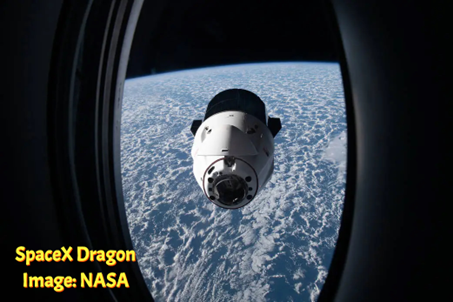SpaceX to Take Down International Space Station
And NASA is paying a whopping $843 million to the Elon Musk led company to deorbit it

Elon Musk has won a space battle that he is highly unlikely to celebrate. His SpaceX was chosen by NASA to develop a spacecraft that will virtually retire the International Space Station (ISS) in about six years. The company is being paid $843 million to retire the ISS, which is nearing the end of its operational life.
Must say that is probably poetic justice that NASA, which has been the fountainhead of all space travel and knowledge since it was set up in 1958, appointed SpaceX as the one to bring down the relics of a past era when space exploration was government-backed. And the timing is right too amidst plans for new, commercially owned space stations.
As readers would know, the ISS is one of the most complex international collaborations ever attempted with the participation of the United States, Russia, Canada and Japan and countries of the European Space Agency. The project, designed between 1984 and 1993, was fully functional in 1998
The mandate is fine, but the timing is awry
That SpaceX has been given the mandate to dismantle the last vestiges of government-backed space programs is poetic justice indeed. However, there could be more to this one. NASA is relying on SpaceX’s Crew Dragon spacecraft to be pressed into service to rescue two of its astronauts, including Indian-origin Sunita Williams from the space station.
The two astronauts, who went on a week-long mission, have overstayed by two weeks amidst reports that it could further extend up to July 6. And the nub of their problems emanates from SpaceX rival Boeing’s Starliner’s propulsion system that is required to back the capsule away from the space station and position it to dive through Earth’s atmosphere.
Published media reports claim that several of Starliner’s thrusters have overheated when fired and the leaks of helium, used to pressure the thrusters, seem to be connected to how frequently they were used. Starliner can stay docked for up to 45 days, extendable to 72 days by relying on backup systems if absolutely necessary.
However, in the unfortunate case where Boeing’s Starliner is deemed as incapable of safely returning the astronauts back home, NASA is left with the only option of sending them home aboard the Crew Dragon of SpaceX. This capsule had ferried four astronauts to the ISS in March and can carry more people in an emergency.
What would SpaceX be doing and who’s in charge?
Now, coming to the other issue of SpaceX building a spacecraft to dismantle the Space Station, please note that we wouldn’t dream of associating this contract with the other problem. Just that the timing of the announcement could have been better from NASA’s side. Which is why we said upfront that Elon Musk would not be celebrating this now.
For now, NASA has only announced that SpaceX has the contract. Hardly any details of the Deorbit Vehicle (which is what NASA calls it) have come through, barring that it would be nothing like SpaceX’s Dragon capsule, that could be put into use to ferry the two astronauts back to earth soon.

(Source: NASA – Images sent by the ISS in the past)
It has also been confirmed that unlike these vehicles that are built and operated by SpaceX and possibly others in the future, NASA would be taking ownership of the deorbit vehicle post-development and operate it throughout its mission. So, yes while Musk’s team will be building it, the operations would continue with the national space agency.
This is so because NASA wants to be in charge when the actual deorbit happens and both the vehicle and the space station break up as they re-enter earth’s atmosphere. The onus of ensuring that this reentry happens without endangering any life on earth is with SpaceX now though under supervision by the agency.
In the lead up to this announcement, NASA was exploring and evaluating other options including the use of a Russian Ros cosmos Progress spacecraft for the deorbit. However, the five space agencies operating the ISS decided that a new spacecraft was required for the maneuver that involved the station’s safe demise. At this moment, there is no news about who is paying the dollars – is it NASA or all the five agencies.








